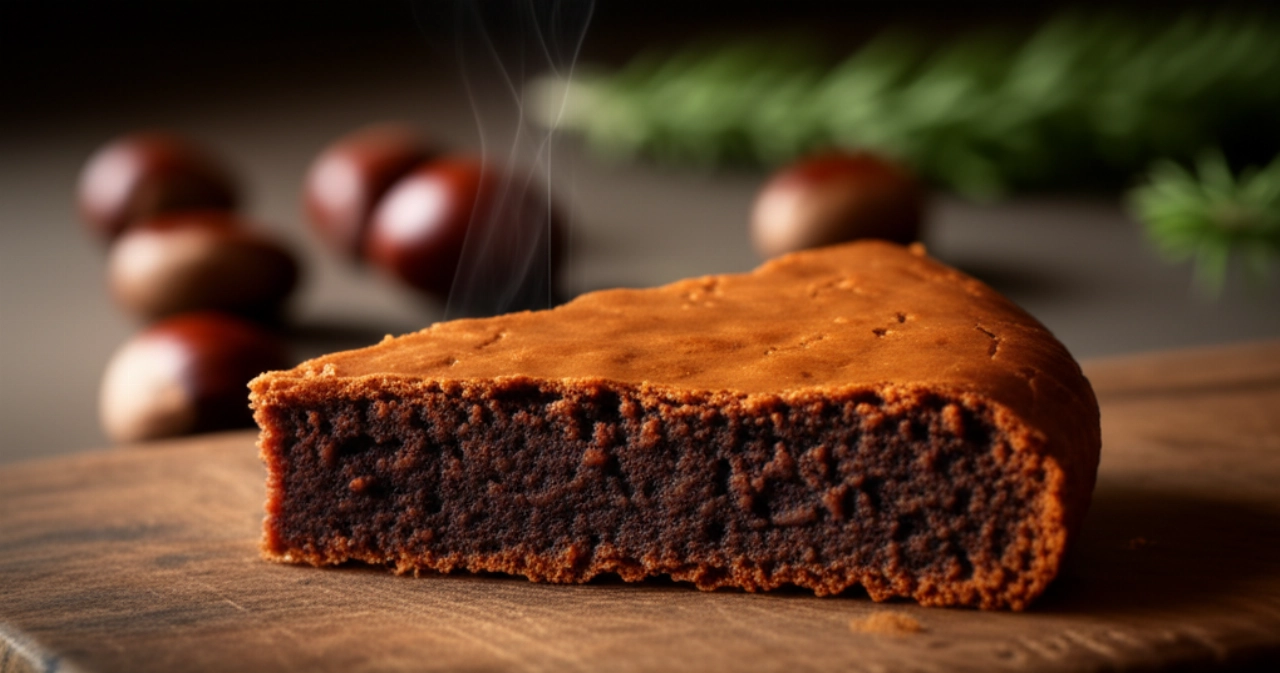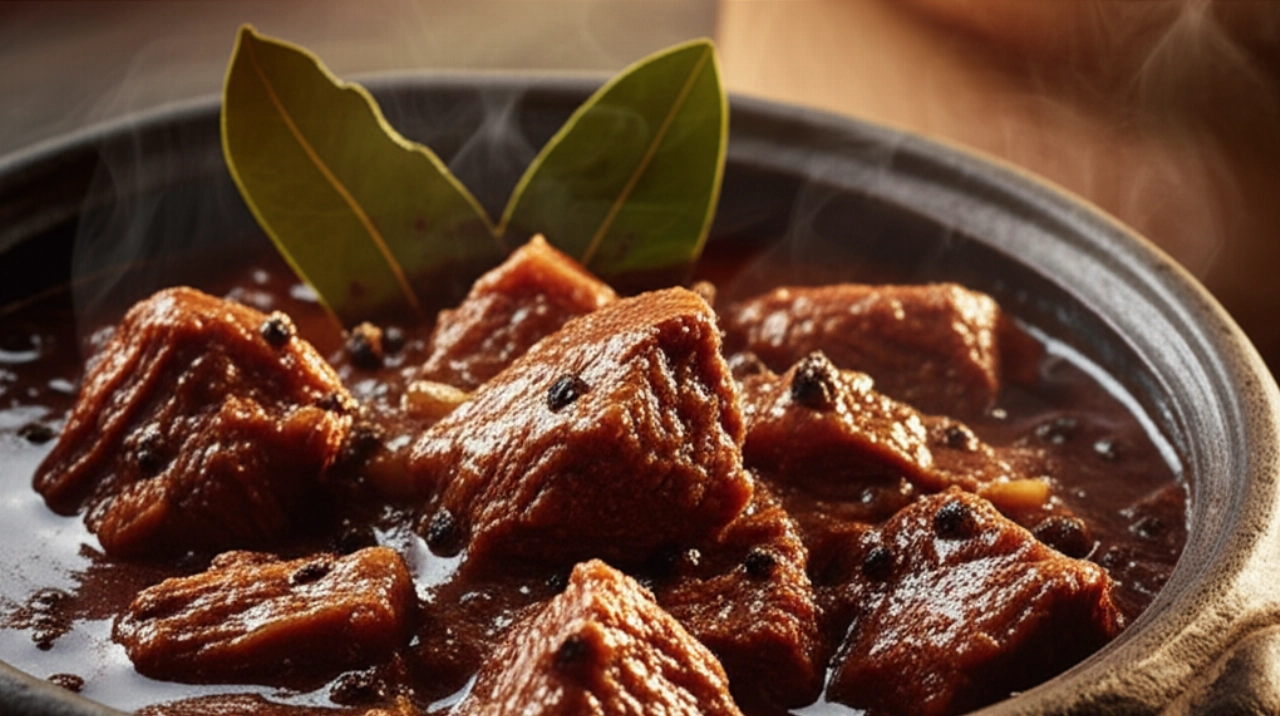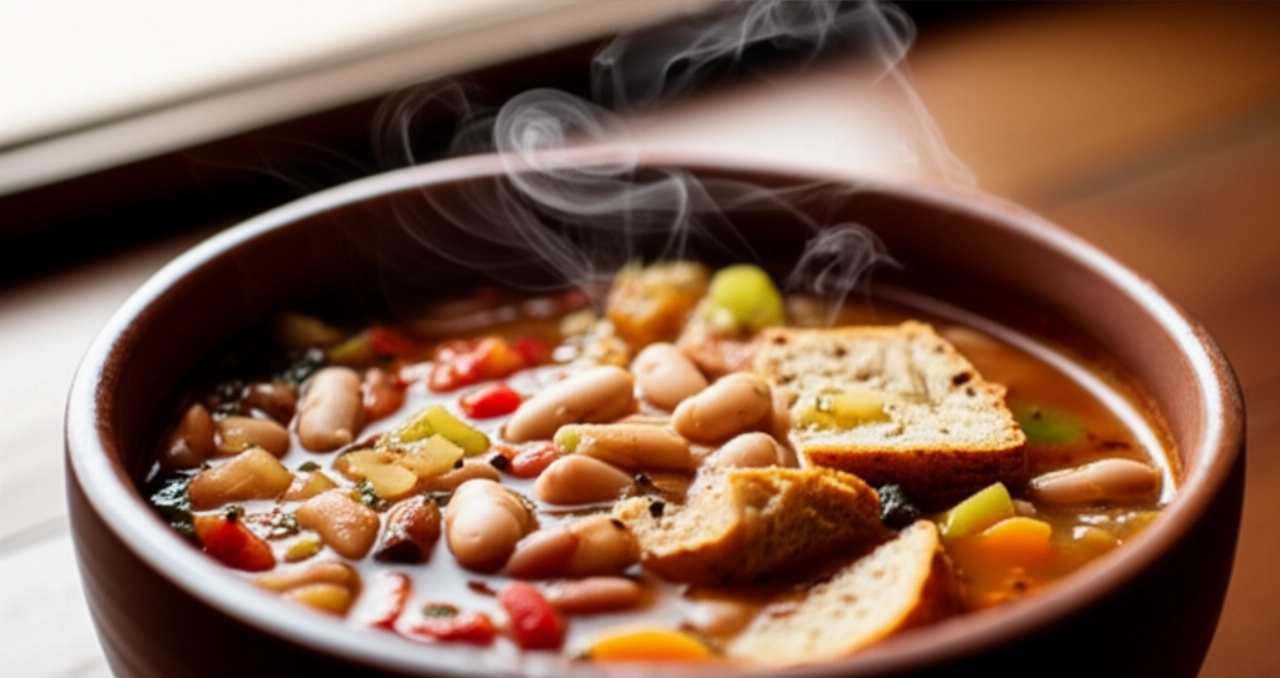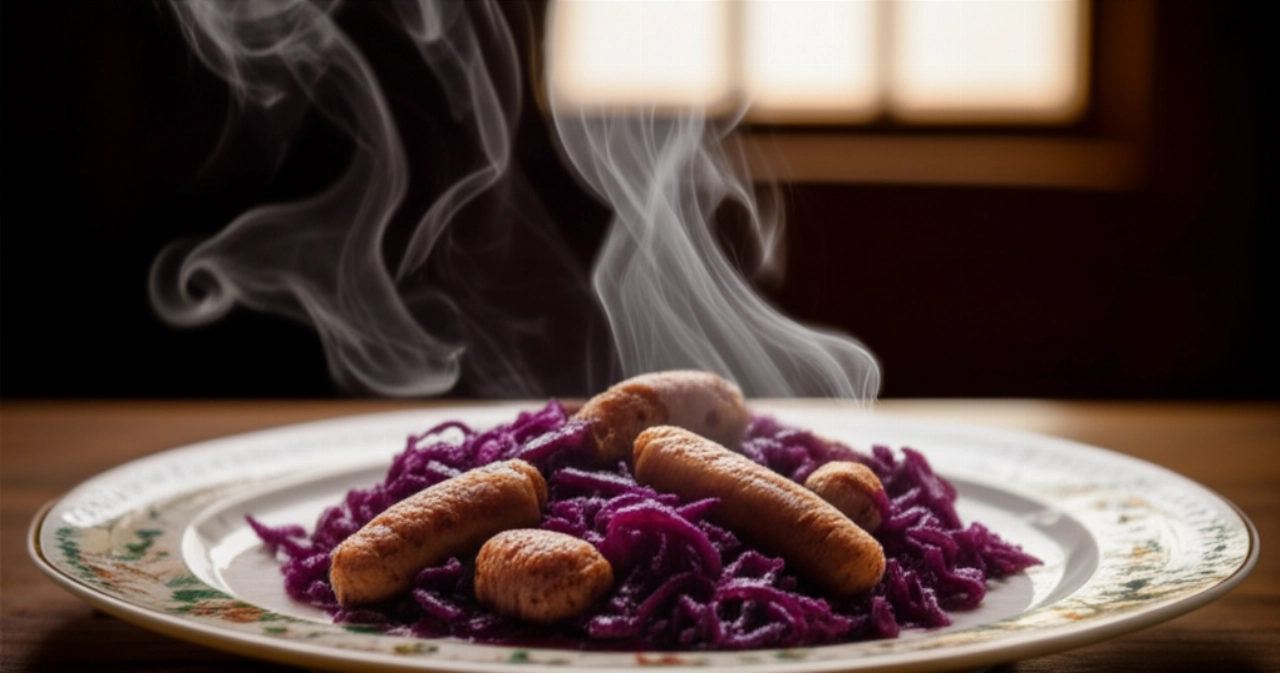There's a scent that evokes home, harvest, autumn afternoons, and happy memories. We're talking about Tuscan Grape Schiacciata, a typical Tuscan sweet bread that embodies the essence of rural tradition and the joy of the earth's fruits. A soft dough, almost a cloud, embracing juicy and fragrant grape berries, transforming into a true poem for the palate.
But how many times have you tried to make it, and the result wasn't what you hoped for? A dough that was too hard, under-proofed, or a taste that didn't bring back memories of your grandmother's true Tuscan Grape Schiacciata? Finding the right recipe, one that guarantees softness and authenticity, can seem like a challenge.
Don't worry, you're in the right place. Here at Search Recipes, your trusted kitchen, we'll reveal every secret to preparing a Tuscan Grape Schiacciata so soft, fragrant, and authentic that it will feel like stepping back in time. You won't just find a list of ingredients, but the definitive guide, full of tricks and tips, for a flawless result. Success is guaranteed, and the aroma in your home will be unforgettable!
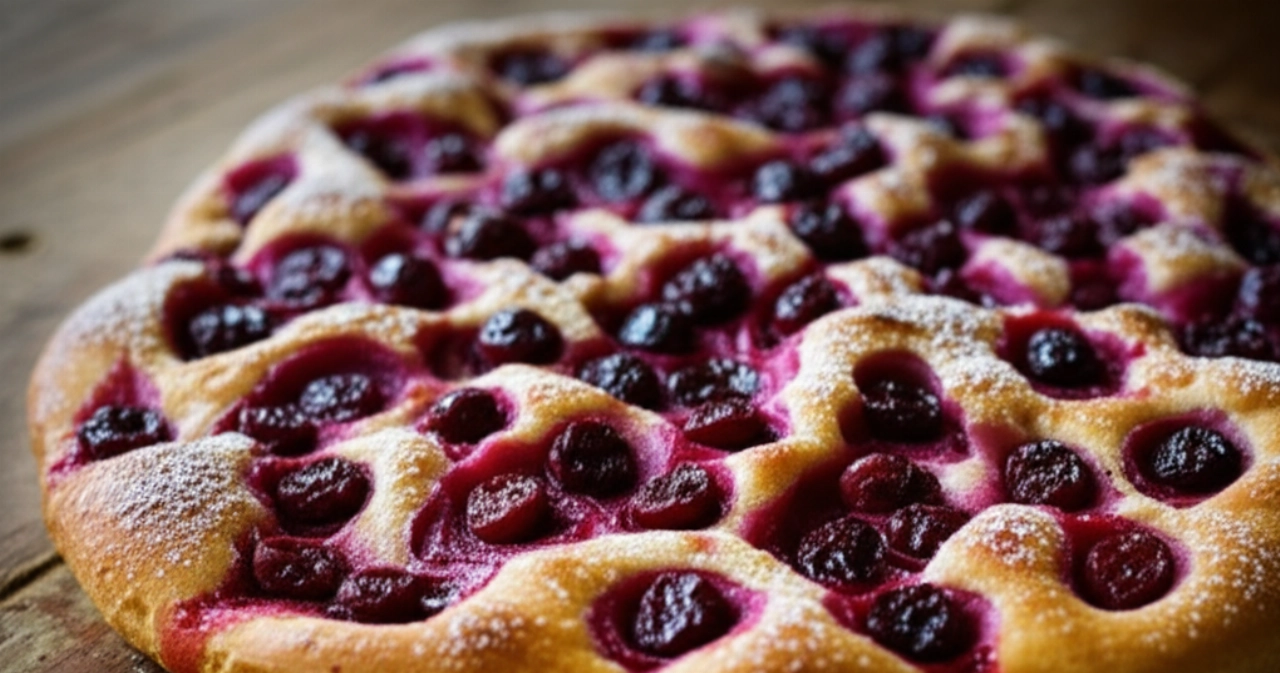
Ingredients for a Foolproof Tuscan Grape Schiacciata: The Choice That Makes All the Difference
Every great dish begins with carefully selected ingredients. For our Tuscan Grape Schiacciata, quality is essential. Let's see what you'll need and why each element is crucial:
- 00 Flour (or Manitoba): For an elastic and well-proofed dough. 00 flour is perfect for its fineness, but a portion of Manitoba (strong flour) can help develop an even more tenacious gluten, making the schiacciata softer and more airy.
- Fresh baker's yeast: The heart of the leavening. Choose it fresh; it's more active and will guarantee a perfect rise. If using dry yeast, remember to reactivate it in warm water with a pinch of sugar.
- Granulated sugar: Not only sweetens but also feeds the yeast and helps give the crust a beautiful golden color.
- Warm water: The water must be warm (not hot!) to activate the yeast without "cooking" it. It's the right temperature to make it work best.
- Delicate extra virgin olive oil: A touch of EVO oil, preferably delicate so as not to overpower the grape flavor, gives softness to the dough and an unmistakable aroma. It's a key ingredient in Tuscan tradition.
- Fine salt: Balances flavors and strengthens the gluten structure. Don't overdo it, but don't forget it!
- Strawberry grapes (or small-berried black grapes): The star ingredient! Strawberry grapes are the traditional choice for their intense aroma and sweet-tart flavor. If you can't find them, opt for a black grape with small, juicy berries, but make sure it's well-ripened.
- Pearl sugar (for the surface): For a crispy crust and an extra touch of sweetness.
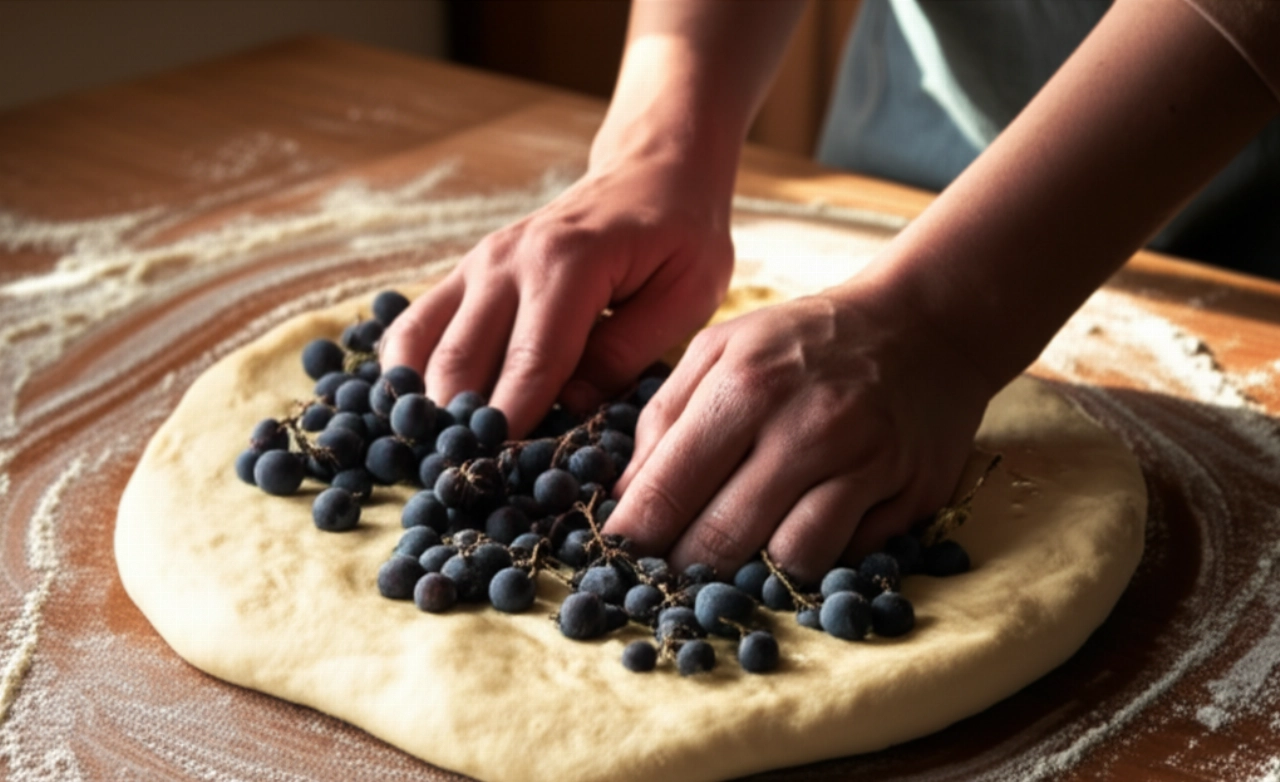
3 Common Mistakes with Tuscan Grape Schiacciata (and How to Avoid Them)
Even the most experienced cooks can make a few small mistakes. But don't worry, your chef grandma is here to reveal the secrets to avoiding them and guaranteeing you tremendous success:
- Not activating the yeast properly: If the yeast isn't "awake," the dough won't rise. Make sure the water is warm (around 30-35°C, no more!) and that, once you add the yeast and a pinch of sugar, a light foam forms on the surface after a few minutes. That's proof that the yeast is alive and ready for action!
- Not kneading enough: An under-worked dough will be hard and not very elastic. Tuscan Grape Schiacciata needs to be kneaded for a long time until it becomes smooth, homogeneous, and no longer sticks to your hands. This allows for gluten development, which is fundamental for softness. Be patient, the dough will reward you!
- Using the wrong grapes or not preparing them well: Strawberry grapes are the queen, but if you can't find them, choose a sweet and juicy black grape with small berries. The most common mistake is not washing and especially drying the grapes very well. Excess moisture can compromise the leavening and make the schiacciata watery.
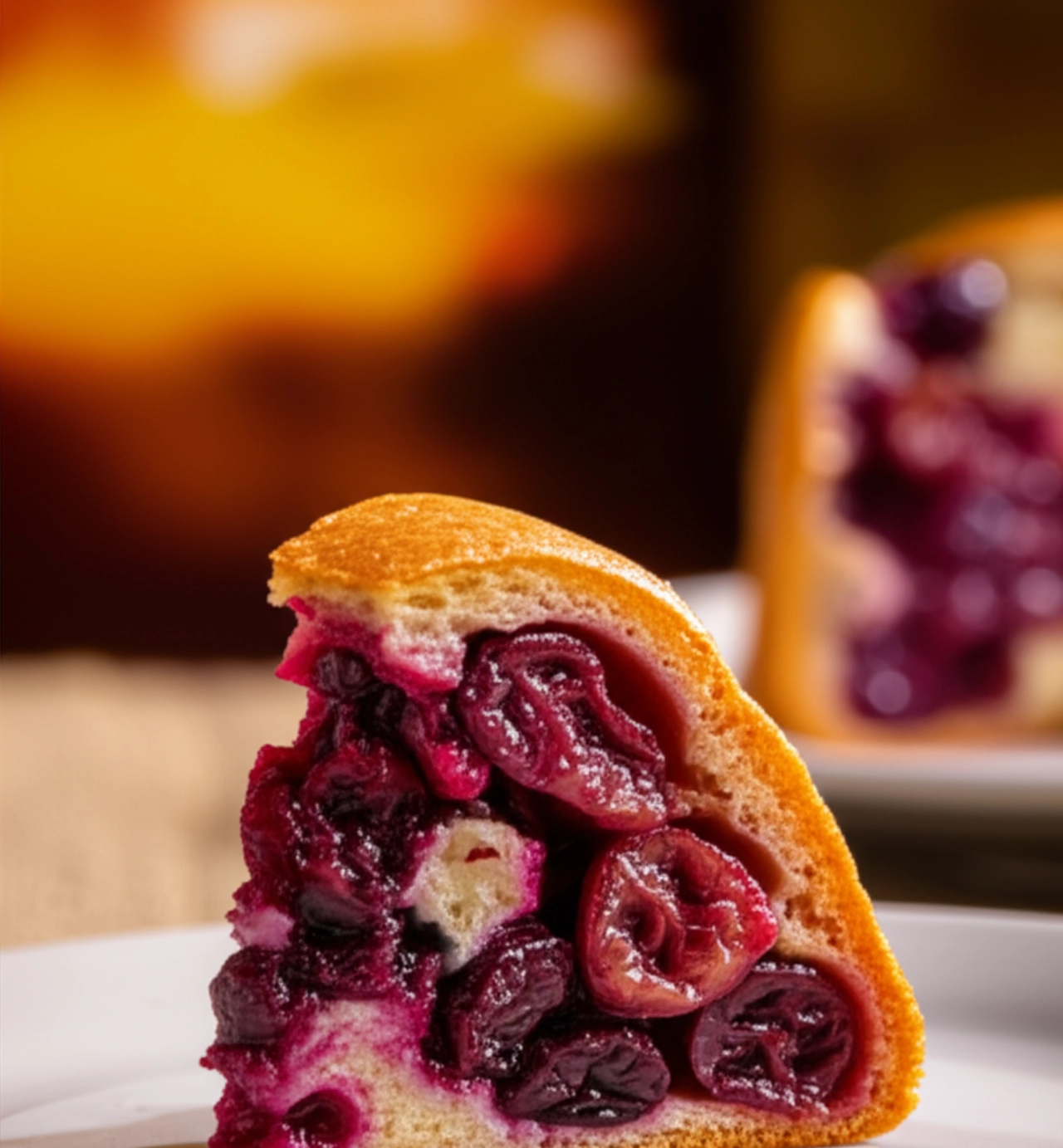
The Magic Touch: The Secret That Makes Tuscan Grape Schiacciata Perfect
My grandmother, when she prepared Tuscan Grape Schiacciata, had an almost sacred ritual. She always told me: "Remember, darling, patience is the secret ingredient you won't find written in any recipe." And she was right. Her secret lay in two fundamental steps, seemingly simple, but which made all the difference:
The first was double proofing. She wasn't content with just one. After the first proofing of the dough, she would spread it in the baking pan, distribute the first portion of grapes, and then let it rest a bit longer, covered, before adding the second portion of grapes and baking. This allowed the dough to "embrace" the grapes and develop a unique, almost ethereal softness.
The second, and perhaps most important, was the post-baking touch. As soon as the Schiacciata was ready, still warm and wonderfully fragrant, Grandma would delicately brush it with a drizzle of extra virgin olive oil and a generous dusting of sugar. This not only created a shiny and inviting crust but also sealed in the internal moisture, keeping the schiacciata incredibly soft and juicy for hours. A true embrace of flavors and textures!
Let's Prepare Tuscan Grape Schiacciata Together: The Step-by-Step Guide for Guaranteed Success
Ingredients:
- 500 g 00 flour (or 400g 00 + 100g Manitoba)
- 12 g fresh baker's yeast
- 100 g granulated sugar + as needed for the surface
- 250-280 ml warm water
- 50 ml delicate extra virgin olive oil + as needed for greasing
- 5 g fine salt
- 500-600 g strawberry grapes (or small black grapes)
- Pearl sugar (optional, for the surface)
Equipment:
- Large bowl
- Stand mixer (optional, but recommended)
- Plastic wrap
- Rectangular baking pan (approx. 30x40 cm)
- Parchment paper
Instructions:
- Activate the yeast: In a small bowl, dissolve the fresh baker's yeast in 100 ml of warm water (not hot!). Add a teaspoon of sugar and stir. Let it rest for 5-10 minutes until a light foam forms on the surface. This is the sign that the yeast is active!
- Prepare the dough: In a large bowl (or in a stand mixer with the dough hook), combine the flour, remaining sugar, and salt. Add the activated yeast and extra virgin olive oil. Begin kneading, gradually adding the remaining warm water, a little at a time, until the dough comes together.
- Knead with love: Transfer the dough to a lightly floured surface and knead vigorously for at least 10-15 minutes (or 8-10 minutes in a stand mixer at medium speed). The dough should become smooth, elastic, and non-sticky. It should "form a ball" and detach well from your hands.
- First proofing: Form the dough into a ball, lightly grease it with a drizzle of oil, and place it in the clean bowl. Cover with plastic wrap and let it proof in a warm place free from drafts (e.g., in an unheated oven with the light on) for about 2 hours, or until it has doubled in volume.
- Prepare the grapes: While the dough is proofing, thoroughly wash the grapes and dry them perfectly with a clean cloth. This step is crucial to prevent water released from the grapes from compromising the baking.
- Roll out the dough: After the proofing time, gently deflate the dough. Grease a baking pan (approx. 30x40 cm) with oil and line it with parchment paper. Roll out the dough directly into the pan, using oiled hands, until it covers the entire surface. Don't worry if it's not perfectly uniform; the important thing is that it's spread out.
- First grape topping: Distribute half of the grapes over the dough, gently pressing the berries to embed them slightly. Cover the pan again with plastic wrap and let it proof for another 30-40 minutes. This is Grandma's secret for extra softness!
- Complete and bake: Preheat the static oven to 180°C (350°F). After the resting time, distribute the remaining grapes over the dough. Brush the surface with another drizzle of extra virgin olive oil and, if you like, sprinkle with some pearl sugar.
- Baking: Bake the Tuscan Grape Schiacciata in the preheated oven for about 30-40 minutes, or until it's golden brown on top and the grapes are slightly wilted and caramelized. The aroma that will fill your kitchen will be intoxicating!
- Grandma's final touch: As soon as it's out of the oven, while still warm, brush the surface of the Schiacciata with another drizzle of extra virgin olive oil and sprinkle generously with granulated sugar. This will create an irresistible crust and keep the schiacciata moist.
- Serve: Let it cool slightly before slicing and serving. It's delicious both warm and cold, perfect for breakfast, a snack, or as a dessert after a meal.
Tips and Frequently Asked Questions about Tuscan Grape Schiacciata
Here are some of the questions I get asked most often about Tuscan Grape Schiacciata. I hope they're helpful!
- Can I use another type of grape?
- Certainly! Strawberry grapes are the most traditional for their aroma, but you can use common black grapes, as long as they are sweet and have small berries. Avoid grapes that are too watery or have thick skins. The important thing is that they are well-ripened and juicy.
- Can I prepare the dough in advance?
- Yes, you can prepare the dough the night before and let it proof slowly in the refrigerator overnight. In the morning, take it out of the fridge at least an hour before rolling it out, to allow it to return to room temperature and resume proofing.
- How do I store Tuscan Grape Schiacciata?
- Tuscan Grape Schiacciata can be stored at room temperature, covered with a clean cloth or in an airtight container, for 2-3 days. It tends to remain soft thanks to the oil and grapes. You can also warm it slightly in the oven before serving to restore its full fragrance.
- Why is my schiacciata hard or under-proofed?
- The most common causes are inactive yeast (check the expiration date and water temperature), under-worked dough (not enough gluten developed), or a proofing environment that is too cold. Make sure to follow the indicated times and temperatures carefully!
- Can I add other flavorings to the dough?
- Tradition dictates that Tuscan Grape Schiacciata be simple, to highlight the grape flavor. However, if you wish, you can add a pinch of grated lemon zest to the dough for a citrus note, or a pinch of cinnamon for a spicier touch, especially if you're not using strawberry grapes.
There you have it! Now you no longer just have a recipe, but all the secrets to bringing a dish to the table that tastes of home, tradition, and love. A sweet treat that speaks of harvest, authentic flavors, and happy moments spent with family.
Don't be afraid to experiment. Cooking is an act of creativity and an act of love. But start with this solid base, and you'll see that applause will not be lacking. Your Tuscan Grape Schiacciata will be a guaranteed success, and its aroma will fill your home with warmth and happiness.
Have you tried our recipe? We're eager to see your masterpiece! Leave a comment below, tell us how it went, or share a photo on Instagram by tagging @SearchRecipes. If you loved this Tuscan Grape Schiacciata, you can't miss our recipe for Tuscan Castagnaccio, another gem of our tradition, or for a classic like Homemade Panettone. Happy cooking!
